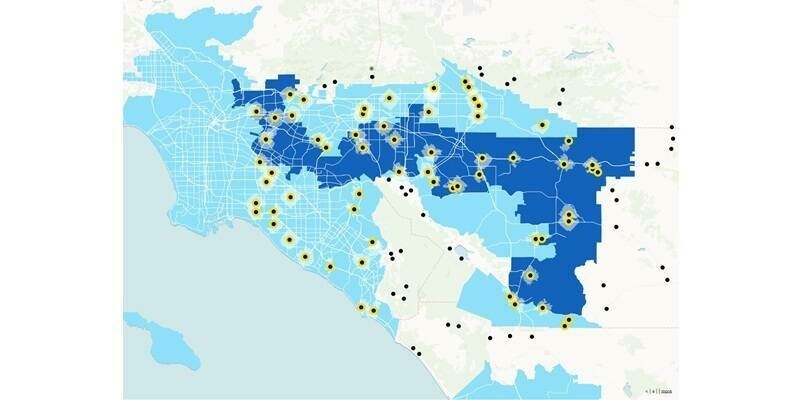The National Policing Digital Strategy highlights data as a key enabler, helping the UK to shift from a reactive policing model, to building and using proactive and preventative solutions to protect the public from harm.
To ensure this happens two of the recommended actions in the strategy is to:
- Drive data quality and consistency by developing a reference data management guide nationally, to be deployed locally;
- Continue to build national automation, analytics, and Artificial Intelligence capabilities to enhance data quality, facilitate data-sharing across systems and extract insights to deliver better service outcomes.
Data is arguably policing’s most valuable asset, which has now been given prominence within the National Strategy. It was clear from the dedicated data day at the Police Digital Summit back in February that this prominence was needed and welcomed by both policing and suppliers. Moreover, there has been a renewed focus on data and data quality that has seen many police forces looking to assess and improve the quality of their data.
However, with such a large and valuable asset, running projects to improve the data whilst maintaining business as usual can be logistically challenging. In our opinion, the service should be focusing on the data that offers the greatest operational value, and for which quality should therefore be a priority.
Location is a cornerstone of data led decision making, over 80% of data has a location element and to use a popular phrase, “Everything Happens Somewhere”. This article aims to explore the value that location data presents and the importance of ensuring that it meets the required and expected quality.
Why is data quality a priority when fulfilling operational policing demands with a finite resource?
Data underpins decision making, whether that is rapid decisions responding to an emergency incident or assessing where and when to deploy resources to prevent crime based on previous patterns and trends. The quality of the data must be a key consideration before investing in data-enabled technologies, as the quality of the output is only as good as the quality of the inputted data and the service will not realise the value of any investment if quality is poor.
For example, when deploying strategic preventative measures such as high visibility policing or traceable liquid burglary reduction programmes, it is vital that officers are deploying resources to the correct location. This will often be done using a GIS system, clever digital dashboarding tool or command and control system. However, poor quality location data can lead to false positive hotspots, or identification problems, potentially leading to a finite resource being deployed to the wrong location.
Unique Property Reference Numbers (UPRNs)
The location element of data can be more detailed than regional hotspot mapping, for example linking multiple datasets to a single location and enabling the POLE data model via UPRNs. The Unique Property Reference Number (UPRN) is the unique identifier for every addressable location in Great Britain.
By using the UPRNs as a key, police officers can link multiple datasets together using Master Data Management techniques, to get a full picture of what has happened over time at a location. – avoiding the risk of differing address recording formats and confusing users:
*Flat A, 1 Acacia Avenue, Sunnyville, SU1 1AB
*1Acacia Avenue, Sunnyville, SU1 1AB
*Pinewoods, 1 Acacia Avenue, Sunnyville, SU1 1AB
*Pinewoods, Sunnyville, SU1 1AB
*Flat A, Pinewoods, Acacia Avenue, Sunnyville, SU1 1AB.
By providing police officers with the UPRN they have an undisputed location reference to investigate other datasets such as:
*Neighbouring forces’ incident data
*Local Authority Records
*DVLA Registrations
Officers can then collect evidence linked to an undisputed location reference, linking the correct person to the scene of the crime by supporting the POLE data model (proving the person, object, location and event).
Having confidence that the data is accurate is key for policing, both in demand management and planning and in response to a call for service. Officers need to know they can trust the data to make key decisions, and that it won’t present a risk to the public or their own safety.
Local and National Data
The majority of data created locally will have operational value for others. Data can be collected once and used many times, particularly when shared i.e. Police National Database. This local to national supply chain heightens the impact of poor quality data. National use cases are similar to the ones described above, with the need to understand the location of events to inform operational decisions. At scale, the problem is magnified, making resolving the problem more challenging. Resources such as the Police National Database is a critical resource for combatting cross boundary crime, however, as with other digital investments, the return of investment will only be as good as the data that is put in. By fixing the quality of the data locally, police forces can ensure they get maximum return on investment on national resources.
What should your force do?
There are three stages to improving data quality in policing:
1. Decide which data to invest and cleanse, and which data is no longer relevant. Despite the long-term benefits and ultimate return on investment, Data Quality Transformation Programmes are expensive and time consuming, and part of the process is recognizing what data matters the most, i.e. what data has the greatest operational value.
2. Cleanse the legacy data that is still required for operational policing. This should be done against data quality standards and business rules defining how you want your data to be structured.
3. Embed data quality into business as usual, including a culture where data quality is a priority. The most effective way to tackle data quality is to create an environment in which data is accurate as close to point of creation as possible. This reduces the amount of date rework and limit data debt.
Data is a key enabler, as highlighted in the National Digital Strategy, with data quality as a core recommendation. However, the volume of data and legacy of data in policing means this is a large challenge to tackle. Fixing data quality should be a gradual and planned process with priority given to location data, due to its tactical and strategic importance.
Practical Steps
If you are interested in getting started on your data quality journey, why not take a data maturity assessment? This is a great way to identify the quality of your data and where to prioritise for potential first steps on your data quality journey.
Get in touch
If you have any questions or would like to discuss this further with one of our authors, please do not hesitate to get in touch; [email protected] or alternatively, fill in the contact form on our website.

Subscribe to our newsletter
Stay updated on the latest technology, innovation product arrivals and exciting offers to your inbox.
Newsletter

